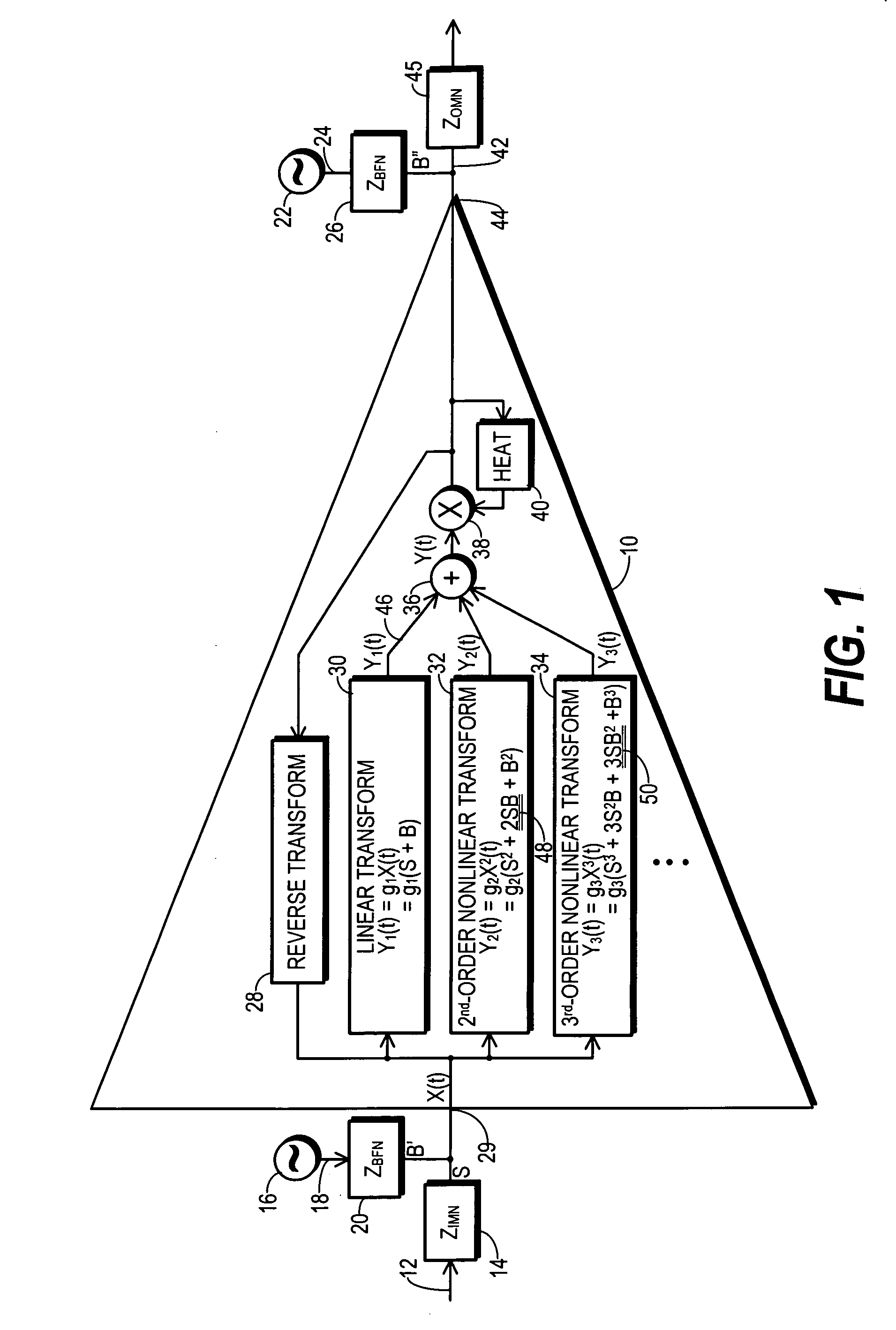RF Transmitter with Bias-Signal-Induced Distortion Compensation and Method Therefor
a technology of bias signal and compensation method, which is applied in the field of radiofrequency (rf) transmitters, can solve the problems of amplified rf signal output from rf power amplifiers to spill outside the frequency range, distortion, unwanted intermodulation,
- Summary
- Abstract
- Description
- Claims
- Application Information
AI Technical Summary
Benefits of technology
Problems solved by technology
Method used
Image
Examples
Embodiment Construction
[0023]FIG. 1 shows a block diagram of a model which characterizes, at least in part, the performance of a generic RF amplifier 10 for purposes of the present discussion. Those skilled in the art will appreciate that the model depicted in FIG. 1 provides a representation of how RF amplifier 10 appears to operate and does not represent an actual physical device. The model of FIG. 1 is provided for purposes of teaching the nature of signals that are relevant to a particular type of distortion introduced through the operation of RF amplifier 10 with non-DC bias signals. Other models may be more suitable for other purposes.
[0024]An RF analog communication signal 12 is provided to an input of RF amplifier 10 through an impedance 14 of an input matching network (ZIMN). RF communication signal 12 has been modulated to convey the data whose communication is the purpose of a transmitter where RF amplifier 10 resides.
[0025]A bias signal generator 16 generates a bias signal 18, and bias signal ...
PUM
 Login to View More
Login to View More Abstract
Description
Claims
Application Information
 Login to View More
Login to View More - R&D
- Intellectual Property
- Life Sciences
- Materials
- Tech Scout
- Unparalleled Data Quality
- Higher Quality Content
- 60% Fewer Hallucinations
Browse by: Latest US Patents, China's latest patents, Technical Efficacy Thesaurus, Application Domain, Technology Topic, Popular Technical Reports.
© 2025 PatSnap. All rights reserved.Legal|Privacy policy|Modern Slavery Act Transparency Statement|Sitemap|About US| Contact US: help@patsnap.com



